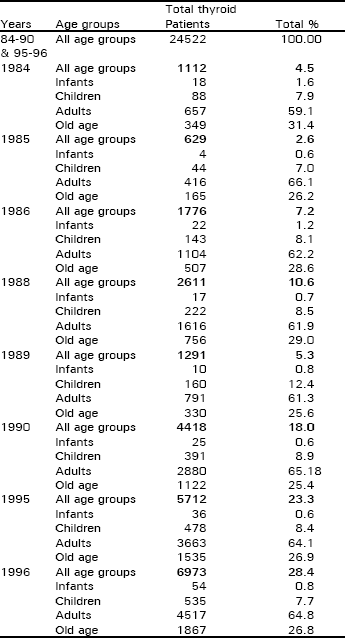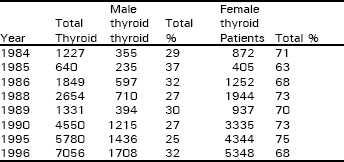Research Article
Distribution of Thyroid Patients Between Age Groups, Sex and Seasons in the Thyroid Patients Referred to Irnum Peshawar
Department of Pathology, Hayat Abad Medical Complex, Peshawar, Pakistan, institute Asian Network for Scientific Information of Radiotherapy and Nuclear Medicine, Peshawar, Pakistan
Shahmim Akhter
Department of Human Nutrition, NWFP Agricultural University, Peshawar, Pakistan
Alam Khan
Department of Human Nutrition, NWFP Agricultural University, Peshawar, Pakistan
M. Mohsin Siddiqui
Department of Animal Husbandry, NWFP Agricultural University, Peshawar, Pakistan
Gul Nawab
Institute of Radiotherapy and Nuclear Medicine, Peshawar, Pakistan














